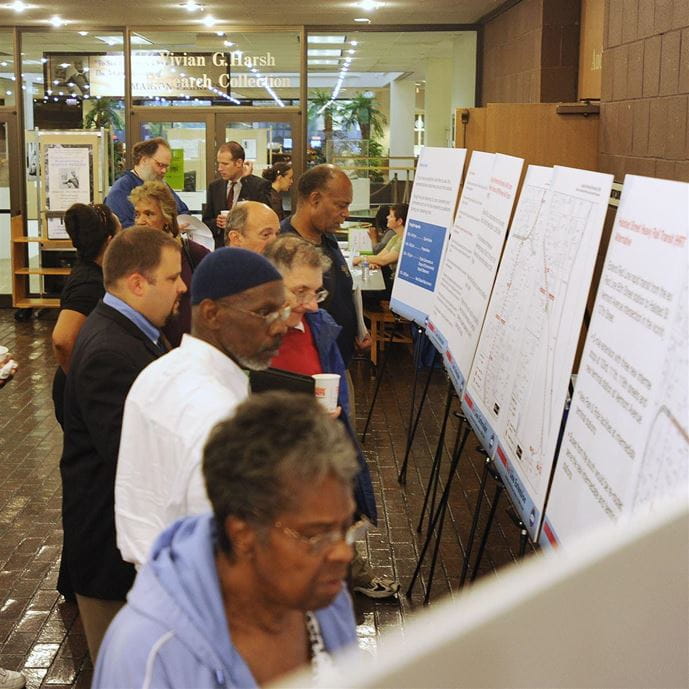Can Truck Platooning Work in Cities?
“Truck platooning” involves connecting two to three tractor-trailers that can travel together at high speeds. The platoon connections are maintained by equipping the trucks with central computing units, radar, cameras, high-speed wireless communication systems, collision avoidance, and anti-lock brakes. While this seems futuristic, the next generation of high-tech trucking fleets are nearly road-ready, as evidenced by recent successful demonstrations of truck platooning by the Federal Highway Administration and several state agencies that have partnered with universities, car manufacturers and technology companies.
Despite these advancements, some questions remain about how truck platoons will work when their tractor-trailers take an off-ramp exit into an urban environment.
“Platoons run in a line,” said CDM Smith project manager Randy Butler, DBA, PMP. “The technologies on board each truck link them 4 to 8 meters apart at highway speeds.” By platooning the trucks at such close distances, Butler said, drag is reduced up to 10 percent, providing significant fuel savings and emissions reductions. Traveling beside a platoon may be safer than if the trucks operated independently, since they take up less roadway together. The approach also presents the potential to streamline freight hauling logistics for trucking companies.
Butler noted that truck platoons are not autonomous, yet: “Today’s technology isn’t quite there. Tests have focused on proving driver-assisted truck platooning: The lead driver operates the throttle, brakes and steering. The on-board systems connect the trailing trucks to the leader, but the other drivers still maintain steering control in their trucks.”
Most cities want an efficient flow of logistics and trucks in their urban environment. Stopping and starting of trucks can cause significant congestion. Through platooning, you can smooth out traffic conditions
While interstate testing scenarios have proven successful, cities, agencies and trucking companies are wondering how to apply the technique on city streets. Slower speeds are an obvious challenge, according to Butler, who previously served as the U.S. Department of Transportation Federal Highway Administration’s technology program manager for freight operations. He said that platooning tests under 15 miles-per-hour have been limited. Another major question is how to coordinate traffic signals with platoons. One potential solution is known as intent-to-platoon freight signal prioritization. This traffic light control method, which has not been deployed in the United States to date, uses roadside intelligent transportation systems to detect oncoming trucks. “If they read that the trucks intend to platoon, a green light will be held long enough for them to pass through together,” said Butler. There are other rules of the road agencies will need to address with city-based truck platooning. “They will need to resolve questions about what lanes the truck platoons will use, when they can make turns, and how they interact with on/off ramps,” said Butler.
For trucking companies, showing a return on investment will be a challenge. Because city speeds are lower, drag (and therefore) fuel savings are reduced. This makes it more difficult to justify the cost of equipping the platoon, according to Butler.
Despite these obstacles, Butler believes all stakeholders could realize benefits from urban platooning. “Most cities want an efficient flow of logistics and trucks in their urban environment,” he said. “Stopping and starting of trucks can cause significant congestion. Through platooning, you can smooth out traffic conditions.” In turn, said Butler, fuel consumption and emissions will be reduced, which is beneficial to the public.
Butler also sees significant upside for cities with large intermodal areas adjacent to the city center. “You may have just-in-time manufacturing situations in cities, where you need to have materials and resources delivered at a certain time. Platooning would support that and would also improve the flow of freight to other modes, like trains, when you have to interchange.”
So, can truck platooning work in cities? Butler is optimistic. “There is still a lot to learn and test,” he said. “But there’s a strong business case for platooning in cities, and the technology development is on the right path to make it possible.”







